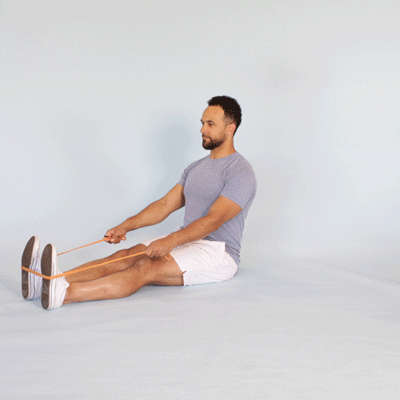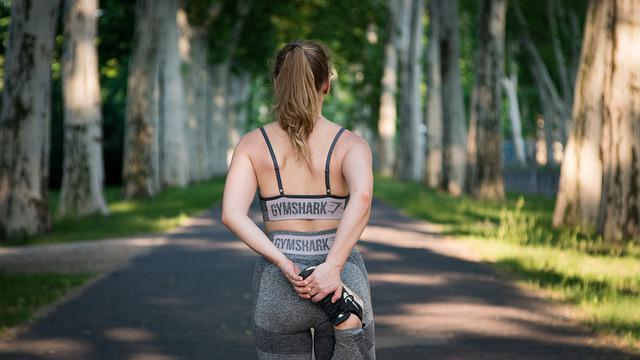
You can train your body with bodyweight exercises, which are great if you don't have any equipment. These can be done at home and are relatively inexpensive. The bodyweight training method can help you build stronger muscles and flexibility. You can do bodyweight exercises at home or in a park if you don't have access.
Squats
Squats are bodyweight exercises that focus on the lower body. The body must be aligned with the knees and hips, and feet should be shoulder-width apart. Your hands should face the rear, with your palms facing forward. Begin by bending your knees and waist, then lowering down to a squat. As you descend your arms will swing outward and turn inward.
Squats can be challenging and effective for people with back and leg imbalances. Balance muscular imbalances by focusing only on one leg while doing a squat. Start by raising your left leg, and then holding the raised foot behind or in front of you. After you're comfortable, lower yourself and stand up again. Between reps, make sure to not place your left foot on the ground.
Chin-ups
Chin ups are a great exercise to strengthen multiple muscles. You must hold your weight on an elevated surface while doing the chin up. When your chin is above the bar, slowly lower yourself and count to three. Return to the starting position and fully extend your arms for your next rep.

Chin-ups strengthen your back and arms while strengthening your trunk. This exercise also trains key movement skills, including grip strength. For chin-ups you can find affordable equipment for your home gym, provided it has a stable surface and sufficient space to grip.
Pull-ups
Pull-ups can be a great way of toning your back, shoulders and biceps. They also strengthen your core. The correct form of pull-ups is essential in order to reap the benefits. Beginers should aim to achieve a 90-degree angle between their elbows and the pull-up bar before they begin. If you have trouble with this, you might consider adding bands to your push-ups.
You will need a pull-up bars to do pull-ups. They can be purchased in most sporting goods stores and online. Once you have your bar, you are ready to start pulling up and strengthening your core and muscles. You will feel more confident and stronger if you do pull-ups.
Forward lunge
Forward Lunge can be described as a bodyweight exercise where both your hips and knees are bent. The front knee should be at least 2 inches off the floor, and the rear knee should stay just above the rear toe. The heel and front knee should not be higher than the floor.
The lunge can be done by anyone of any fitness level. It can be performed using only bodyweight or with dumbbells. The key is to concentrate on correct form and gradually increase the depth in the lunge.

Jumping jack
Jumping Jacks, which are basic exercises for the body, work all major muscles groups. This is an excellent warm-up for athletes of all abilities. They are great for your heart and lungs. They are an excellent way to warm up before going on a run or for increasing your heart rate.
Jumping jacks can be performed with low impact equipment or a weighted bar. Unlike many bodyweight exercises, they don't require a gym membership or fancy equipment. This type bodyweight exercise can provide a cardiovascular workout, help you shed fat and tone your body. You can also increase your bone health by doing jumping jacks.
FAQ
Why is physical exercise important?
Fitness is crucial for our health. Exercise is important to maintain your weight, strength and flexibility as well our cardiovascular system. Exercise can help you sleep better, reduce stress, increase self-esteem, and increase energy levels throughout your day.
Is it possible for one to be too thin?
Yes! Eating disorders and being overweight are both dangerous. It isn't normal to be smaller than your recommended height. It is possible to feel tired, weak or dizzy and may experience other signs that you are underweight.
How many hours should I sleep each night?
The amount of sleep recommended depends on your age, gender, and personal needs. Adults require 7 to 9 hours sleep per night. Teenagers and children typically need about 10 hours of sleep per night, but this number decreases as they grow older.
What happens if I don't get enough sleep?
You can't get enough sleep and your brain will not be able to regulate hormones and chemicals responsible for controlling appetite and metabolism. You may also gain weight and overeat. Lack of sleep also increases stress levels, which can lead to overeating.
Statistics
- Globally, 28% of adults aged 18 and over were not active enough in 2016 (men 23% and women 32%). (who.int)
- An estimated 110,000 deaths per year could be prevented (cdc.gov)
- In high-income countries, 26% of men and 35% of women were insufficiently physically active, as compared to 12% of men and 24% of women in low-income countries. (who.int)
- One study showed that adults who watch more than 4 hours of television daily had an 80% higher risk of death from cardiovascular disease. (heart.org)
External Links
How To
How to Burn Belly Fats Faster
When we are trying to lose weight, belly fat is often seen as a problem. However, Belly Fat can be beneficial if you really think about it. It's the amount of fat stored around your stomach that protects your organs from getting damaged. Let's find out how to lose belly fat quickly.
Lack of exercise and stress are the main reasons we store body fat. Because of its stimulation of the production hormone cortisol, stress can make us feel hungry continuously. Cortisol is responsible for an increase in insulin levels. Insulin then stores excess calories as fat. A lack of sleep leads to adrenaline being released into the system which causes an increased appetite. These extra calories can easily be lost through exercise.
There are many methods to lose belly fat. Depending on your budget, you can try each one. These tips will help you quickly get rid of belly fat.
-
Try to eat less food. Instead of eating three large meals a day, eat smaller meals. You'll eat fewer calories this way.
-
Make sure you drink plenty of water. Water helps flush out toxins from the body and keeps you hydrated. Drinking water prior to every meal will ensure that you are satisfied for longer periods of time and won't eat too much.
-
Avoid eating unhealthy snacks. If you're looking for quick fixes, snack foods like chips, cookies, candies, etc. These tempting snacks might look appealing. These sugary treats have lots of empty calories so avoid them. Instead, choose healthy alternatives like fruits, veggies, nuts, seeds, and whole grains.
-
Do strength training exercises at least three times per week. Strength training builds muscle mass which burns more calories even while resting. Strength training strengthens bones, muscles and ligaments. It can also improve the heart, lungs, joints, and other body systems.
-
Walking or stretching is a good habit to do regularly. Stretching improves flexibility and mobility which can reduce back pain. Walking can help you burn calories.
-
Reduce alcohol intake. Your diet is empty of calories, and alcohol has no nutritional content.
-
You can lose weight slowly. Finding out your current weight is the first step in losing weight. Add 5%-10% of your total bodyweight to calculate your ideal size. Once you have calculated your target weight, start reducing calorie consumption by 500-1000 calories daily until you reach your goal.
-
Avoid processed foods. These foods are high on sugar, salt, and additives. While processed foods can be convenient, they don't offer enough nutrients to ensure your health.
-
Don't skip breakfast! Breakfast is good for your concentration, memory, and energy. Breakfast should contain protein (like eggs), fibre (like oats), as well as complex carbohydrates (like oatmeal).
-
Have regular bowel movements. Constipation or irregularity can lead to gas and bloating. To prevent this, drink plenty of water and increase fiber intake.